Arapahoe County administrative buildings will be closed:
- Tuesday, Dec. 24: Christmas Eve Day
- Wednesday, Dec. 25: Christmas Day
- Wednesday, Jan. 1: New Year’s Day
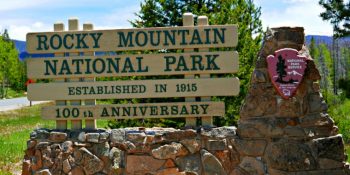
Legislation would allow astronaut Vance D. Brand to donate 40 acres to the RMNP
Washington, D.C. – Colorado U.S. Senators Cory Gardner and Michael Bennet, along with U.S. Representative Joe Neguse (CO-2), introduced two pieces of legislation today to expand the Rocky Mountain National Park (RMNP). The bills allow former NASA astronaut Vance D. Brand to donate 40 acres to Rocky Mountain National Park, and would also resolve a longstanding issue regarding a local family’s cabin that was erroneously transferred to the park. Both land transfers require an Act of Congress to complete.
NOTE: Click here to view and download video remarks from Senator Gardner.
“Astronaut Vance D. Brand is not only an American hero, but also a Colorado hero. Born and raised in Longmont, Colorado, he spent many years at Rocky Mountain National Park, and now he graciously wants to donate 40 acres of land to expand the park where he spent many years of his life,” said Senator Gardner. “However, the Park Service needs approval from Congress to change the park’s boundary. I’m incredibly grateful for his commitment to share more of the beautiful Rocky Mountain National Park area with the public, and I’m proud to introduce this legislation with Senator Bennet and Congressman Neguse to respect this hero’s wishes and make this donation official.”
“For locals and the visitors who travel to Rocky Mountain National Park from around the world alike, astronaut Vance Brand’s generous donation to the park is exciting news,” said Senator Bennet. “Our bills will formally add this parcel of land in the Longs Peak region to RMNP, and clean up boundary discrepancies elsewhere, to improve management in the area. We thank Mr. Brand for this valuable contribution to the park.”

“Public lands are who we are as Coloradans, they drive our outdoor recreation economy and inspire our commitment to sustainability,” said Congressman Joe Neguse. “I am proud to lead this effort alongside Senator Gardner and Senator Bennet to honor the desire of former Astronaut Vance D. Brand to convey 40 acres of land into the treasured Rocky Mountain National Park landscape. Rocky Mountain National Park is one of the most popular national parks in the country and this legislation will enhance the park for future generations to enjoy.”
“My view is that this donation is payback to the American people in appreciation for the wonderful times and many benefits that I receive from great experiences in RMNP. I request the U.S. government to adjust the eastern boundary of RMNP to include the 40 acres that our family donated which currently is in the hands of Rocky Mountain Conservancy,” said Retired NASA Astronaut Vance D. Brand.
Background:
Former U.S. astronaut Vance D. Brand is voluntarily donating a 40-acre tract to Rocky Mountain National Park. The property is located adjacent to the eastern boundary of the park and would add additional protection for the park’s high-elevation ecosystem. This parcel of land would also provide recreational access and connectivity through a scenic, natural buffer between private lands and three popular trails; Estes Cone, Storm Pass, and Eugenia Mine Trails. These three trails connect to and are part of a large trail network offering hundreds of miles of trails to the park’s 4.5 million annual visitors.
The National Park Service (NPS) is working with the Forsyth family to resolve a 1972-73 issue where a 0.18-acre plot containing their family cabin was erroneously transferred to the Rocky Mountain National Park when the NPS purchased a larger surrounding parcel. An error in the bank documents’ legal description of the parcel mislocated the family’s holding as a 0.18-acre plot of vacant land inside the parcel, not the original cabin site. The Forsyth family, seeking to regain legal ownership of its cabin and the 0.18-acre plot on which it sits, proposed an exchange of properties.
Support for expanding the Rocky Mountain National Park:
Forsyth Family Letter of Support
Retired NASA Astronaut Vance D. Brand Letter of Support
Town of Estes Park Letter of Support
Larimer County Commissioners Letter of Support
Rocky Mountain Conservancy Letter of Support
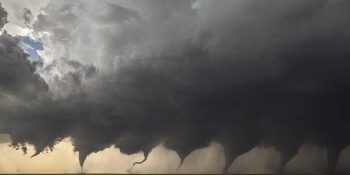
Updated Dec. 13, 2019 10:33 AM
A pair of unforgettable tornadoes bookended the 2019 U.S. tornado season, which is effectively over; the National Oceanic and Atmospheric Administration (NOAA) has no reports of tornadoes so far in December. The U.S. tornado season typically runs from March through November or sometimes into early December, although tornadoes can occur at any time.
The year’s deadliest event was an EF4 tornado that killed 23 people in Lee County, Alabama, in early March. Tornadoes and their destruction killed a total of 38 people in the U.S. this year.
Last year, the U.S. set a record low for the number of fatalities with just 10 people killed, the lowest number since tornado fatality record-keeping began in 1875. The previous record low total was 12 in 1910. Tornadoes cause an average of 80 U.S. fatalities annually.
However, one of the costliest tornado outbreaks in Texas history, amazingly, resulted in no deaths when it struck north Dallas on October 20 and 21. AccuWeather estimates the total damage and economic loss from that severe outbreak of 10 tornadoes – including an EF3 – will approach $4 billion.

“The tornado outbreak this past October was extraordinary in the sense that, thankfully, nobody was killed,” said AccuWeather Founder and CEO Dr. Joel N. Myers. “Nobody – not one person! That’s the story – the amazing progress that has been made in weather forecasting accuracy over the last 50 or more years and our ability to get life-saving warnings to people in advance so they can take action and get out of harm’s way certainly paid off in this case.”
In between the events in Alabama and Texas, 556 tornadoes occurred nationally in May, unofficially breaking the record for the month of 542 set in 2003, though the monthly total has yet to be confirmed. The 25-year average for May is 269 tornadoes.

AccuWeather’s 2019 forecast released in February accurately pinpointed the areas to be hit hardest this year, with a higher frequency of severe weather risks in the traditional Tornado Alley — notably Oklahoma, Kansas and parts of Texas – which is more than they had experienced on average the previous three years.
“People were starting to question whether Tornado Alley should be shifted farther east, but our forecast accurately called for more events in the traditional area this year,” said AccuWeather Lead Long-Range Meteorologist Paul Pastelok.
Texas, with 188 tornadoes, has experienced the most of any state in the U.S., according to preliminary, unconfirmed data from NOAA. Kansas is second with 127, while Oklahoma and Mississippi are tied for third with 98.
“We are trying to prepare people in advance where disruptive weather can occur more frequently throughout the season and impact their safety, work or everyday plans,” Pastelok said. “We work to save as many lives as possible and to give people, companies, those in emergency services and others as much advance notice as possible to prepare and to take action.”
NOAA’s preliminary reports show there have been 1,603 tornadoes in 2019, but that total is not a confirmed final number. The inflation-adjusted annual tornado running total – which attempts to remove overcount by multiplying the preliminary total by 0.85 – is 1,363, according to NOAA.
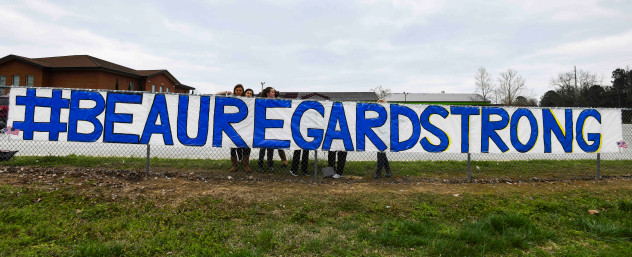
There were 1,169 tornadoes in 2018, and the 25-year average is 1,199 tornadoes a year, according to NOAA’s Storm Prediction Center. AccuWeather’s forecast in February for 2019 estimated an increase of roughly 20 percent over the 25-year average.
Tornado-related fatalities have been trending downward despite more people living in tornado-prone areas. The reasons for this trend include advances in weather science and technology, the increasing accuracy and speed of processing warnings and the effectiveness of warning methods such as through mobile apps, as well as better cooperation between government weather services and the American weather industry that includes AccuWeather.
AccuWeather is a proud and early partner of NOAA’s WeatherReady Nation resiliency program, which helps to continue this trend, and the company is proud to get these lifesaving warnings out to the public rapidly and accurately through its apps and website.
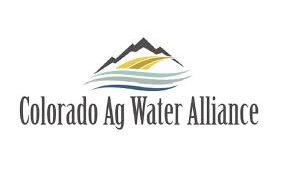
by Colorado Ag Water Alliance and Colorado Watershed Assembly
What do I need to know to dredge a reservoir? How have past dredging projects in Colorado been implemented? How can we get funding?
Presenters are as follows:
“Experiences from Dredging Projects” – Bob Orsatti, Orsatti Water Consultants, David Lighthart, Evergreen Metro District,
“Dredging and Permitting” – Matt Montgomery, Army Corps of Engineers
“Dredging Reservoirs and Water Rights Considerations” – Corey Deangelis, Department of Water Resources
“Financing Dredging Projects” – Matt Stearns, Colorado Water Conservation Board
“Is Working with Municipal Water Providers A Possible Funding Solution?”
Thu, January 23, 2020
11:00 AM – 3:00 PM MST
Aims Community College
5401 20th Street
Greeley, CO 80634
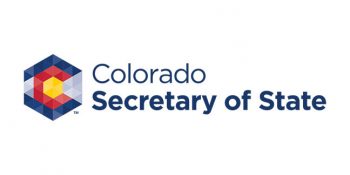
|
The field of candidates who will be on Colorado’s first Presidential Primary in 20 years has been largely established. The deadline to file to appear on the March 3 ballot was yesterday at 5 p.m. “Next year will be busy for Colorado voters, with three statewide elections taking place,” said Colorado Secretary of State Jena Griswold. “We have our first Presidential Primary in two decades, but also a Colorado primary on June 30, and of course the General Election on November 3, which gives Coloradans plenty of opportunities to have their voices heard.” The candidates who have submitted a statement of intent and filing fee in order to appear on the March 3 Colorado Presidential Primary, which is also Super Tuesday, include:
Candidates may still apply to appear on the ballot as a write-in candidate until December 27, which is also the last day a candidate may remove their name from Colorado’s ballot. Voters affiliated with a major party may only cast ballots for the party with which they are affiliated, while unaffiliated voters may cast a ballot for either party, but must choose one. There are a number of key dates to keep in mind in the lead-up to the primary:
This will be the fourth Presidential Primary in state history, with similar votes taking place in 1992, 1996, and 2000. |
Eighty underserved children to Shop with a Cop in Arapahoe County this Saturday
CENTENNIAL – Dozens of families in Arapahoe County who may not be able to afford gifts will have presents under their trees this Christmas. Arapahoe County Sheriff’s deputies are going to take some 80 children shopping at Wal-Mart Saturday in a program called Shop with a Cop.
The deputies will give each child a set amount of money to spend. The kids must buy one gift for a family member, one article of clothing, then can spend the rest on anything they want.
Shop with a Cop is an annual event held by Fraternal Order of Police (FOP) Lodge 31 and the Arapahoe County Sheriff’s Office. This year, the organizations received grants from Wal-Mart, Boeing and FOP Lodge 31. The families were nominated by ACSO employees to participate in the program.
The Irrigation Innovation Consortium, a university and industry collaboration that accelerates the development and adoption of water- and energy-efficient irrigation technology, has announced funding for seven research projects in the upcoming year, including one led by Jay Ham in the Colorado State University Department of Soil and Crop Sciences. The consortium is headquartered at CSU, and its project director is Reagan Waskom, a professor at CSU and director of the Colorado Water Center.
Launched in 2018 with a $5 million contribution from the Foundation for Food and Agriculture Research, the consortium, also supported by matching funds from participants, promotes and enhances water and energy efficiency in irrigation. Its ultimate goal is creating greater resiliency in food and agriculture. Through the consortium, industry and the public sector co-develop, test, prototype and improve equipment, technology, and decision and information systems. Their work is equipping farms of the future with cutting-edge technologies for irrigation efficiency.
The funding announcement came during the Irrigation Show and Education Week in Las Vegas, Nevada. Awardees were selected through a competitive review process that weighed and prioritized projects according to scientific merit, novelty, level of industry involvement, and inter-institution collaboration.
“The proposal review process has resulted in a robust portfolio of funded proposals that fit our mission goals of advancing knowledge, tools, and available technologies and practices that can transform and improve irrigation efficiency,” said LaKisha Odom, chair of the consortium’s Research Steering Committee and a scientific program director for FFAR.
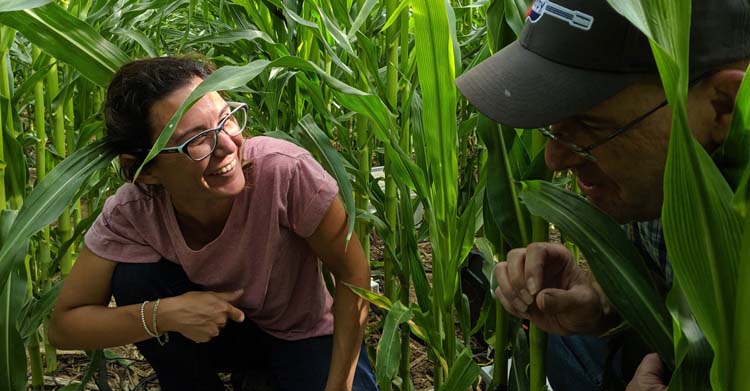
The consortium also selected two “industry pitch” projects, a new option this year to encourage projects initiated by industry members:
“The industry-driven project pitches increase industry participation and drive university researchers to increased collaboration and meaningful impacts,” according to Waskom, the Irrigation Innovation Consortium’s project director.
Members of the consortium’s research network also provided updates at the Irrigation Association show in Las Vegas on current research and innovation projects underway at the participating universities.
The Irrigation Innovation Consortium is composed of the following members: Aqua Engineering Inc.; California State University-Fresno; Climate Corporation; Colorado State University; Colorado Corn; Daugherty Water for Food Global Institute at the University of Nebraska; the Foundation for Food and Agriculture Research; Hunter; Irrigation Association; Jain Irrigation; Kansas State Research and Extension; Kansas State University; Li-Cor; Lindsay Corporation; Northern Water; Rubicon Water; Senninger Irrigation Inc.; Toro; Texas A&M AgriLife Research; Valmont; Vertical Irrigation; Watertronics; and Western Sugar.
More information: https://irrigationinnovation.org/.
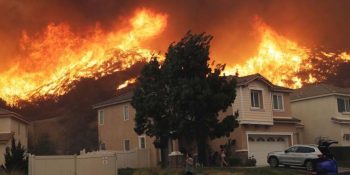
AccuWeather predicted earlier this year that the California wildfire season would be extended into December and that the total damage and economic loss caused by the state’s wildfires would be $80 billion, a pair of estimates that accurately reflect what occurred during the 2019 California wildfire season.
There were a total of 253,354 acres burned in California in 2019 and the wildfires that scorched the most land area were Kincade (77,758 acres), Walker (54,612 acres), Tucker (14,217 acres) and Maria (9,999 acres), according to the California Department of Forestry and Fire Protection. October was the most active wildfire month this year with 119,814 acres burned, followed by 83,908 acres consumed in September, 21,454 acres burned in July and 16,430 acres charred in August. There were also documented wildfires in every month except February, March and December.
For comparison, wildfires burned 1.8 million acres in California last year and 1.3 million acres in 2017.
“There were much fewer acres burned this year than last,” said AccuWeather Founder and CEO Dr. Joel N. Myers. “But there were more power outages this year than last, which increased costs for businesses and individuals. We predicted power outages – both proactive and reactive – would be more of a factor and they were, resulting in a significant cost per customer during the duration of the blackouts.”
California’s three big power companies – Pacific Gas & Electric (PG&E), Southern California Edison and San Diego Gas & Electric – engaged in Public Safety Power Shut-offs (PSPS) as part of their plans to prevent wildfires sparked by a transmission line. PG&E’s four mass blackouts in October left hundreds of thousands of homes and business without power, with an Oct. 26 blackout cutting power to as many as three million people, according to The New York Times.
The Insurance Journal estimated that insured losses from California wildfires were $25.4 billion through Oct. 29. It notes, however, “Damage estimates can vary because some only contain insured losses, while others take in everything that was destroyed. After disasters, many people will pay for repairs out of their own pocket, which often leads to under counting.”
Myers agrees there’s a likelihood of a substantial under-estimation of the damages. “The insurance costs through October 29 were $25.4 billion and there were additional fires subsequently damaging roughly 17,000 acres,” he said. “So the total of insured losses is now probably closer to $40 billion and insured losses usually represent only about half of the total loss, suggesting our $80 billion estimate is accurate.”
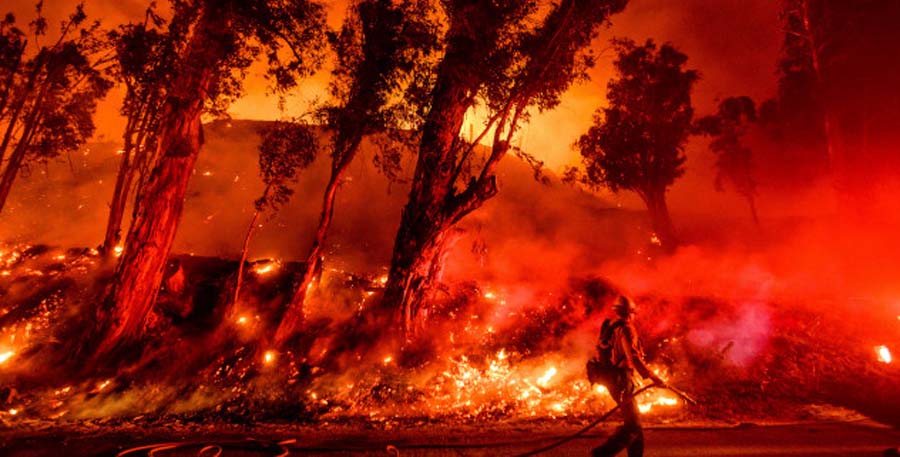
The 2019 California wildfire season follows two of the largest, most destructive and deadliest seasons in the state’s history. AccuWeather estimates the total damage and economic loss caused by wildfires cost California $400 billion in 2018 and $85 billion in 2017.
The “wet season,” which typically begins in California in October and runs into March, was delayed this year, with many cities receiving no measurable precipitation until late November. In Fresno, rain arrived on Nov. 20, making it the third-latest start to the wet season on record, behind Dec. 11, 1995 and Nov. 30, 1923.
“Typically, we have seen storms come down during the middle or latter part of October and at least bring some precipitation,” said AccuWeather senior meteorologist Dan Kottlowski. “[To go] through the middle of November with no rainfall is highly unusual…. But that was predicted – we thought that would be the case, so we weren’t surprised about that.”
AccuWeather’s estimate includes damage to homes and businesses as well as their contents and cars, job and wage losses, school closures and the costs of power outages to businesses and individuals. It also accounts for economic losses because of highway closures, evacuations and increased insurance premiums throughout the state, firefighting costs, airport closures, flight cancellations and delays and the current and long-term residual health effects on those impacted by smoke and dirty air.
Download the free AccuWeather app to track the temperature for your area. Keep checking back for updates on AccuWeather.com and stay tuned to the AccuWeather Network on DIRECTV, Frontier and Verizon Fios.
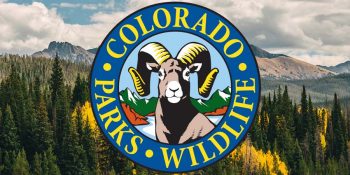
DENVER, Colo. – Colorado Parks and Wildlife is celebrating 30 years of the North American Wetlands Conservation Act this month. NAWCA, signed in December 1989, provides financial support for waterfowl habitat that also supports a multitude of other wetland-related wildlife species. NAWCA provides matching grants to wetlands conservation projects in the United States, Canada, and Mexico. Over the past three decades, the acquisition and restoration of wetland habitat have provided healthy wetlands where:
NAWCA grants increase bird populations and wetland habitat, while supporting local economies and American traditions such as hunting, fishing, bird watching, family farming, and cattle ranching. Wetlands protected by NAWCA provide valuable benefits such as flood control, reducing coastal erosion, improving water and air quality, and recharging groundwater.
In the past two decades alone, NAWCA has funded over 2,950 projects totaling $1.73 billion in grants. More than 6,200 partners have contributed another $3.57 billion in matching funds to affect 30 million acres of habitat.
Since it began 30 years ago, NAWCA funds have contributed $25 million to Colorado’s wetlands.
“Colorado Parks and Wildlife’s Colorado Wetlands for Wildlife Program has been able to leverage annual grant funding from Great Outdoors Colorado to expand the scope of projects in Colorado that are eligible for matching grant funding under NAWCA,” said CPW Wetlands Program Coordinator Brian Sullivan. “These funds are critical to our ability to conserve wetlands in Colorado.”
“Funding from the North American Wetland Conservation Act was critical to the success of our Rio Grande Initiative to protect 25,000 acres of private ranchland along the Rio Grande and its tributaries,” said Allen Law, Executive Director of the Rio Grande Headwaters Land Trust. “Conservation easements on these ranches helped our agricultural community while permanently protecting thousands of acres of Colorado’s most resilient and important wetlands.”
Below are some examples of NAWCA-funded projects in Colorado
Elliott State Wildlife Area Shallow Water Wetlands – Completed September 2018
Elliott State Wildlife Area (SWA), adjacent to the South Platte River near Brush, Colorado is a complex of numerous shallow wetlands that are flooded in the spring and fall utilizing Union Ditch water rights for migratory bird habitat and fall public recreation. Unfortunately, many of the basins contained deep, scoured areas that tended to pool deep water, which then limited the capacity of the entire flow-thru complex and greatly hampered bird and hunter use.
Ducks Unlimited, Inc. (DU) utilized their professional expertise to engineer and regrade 15 of the existing basins, amounting to roughly 200 acres of wetlands. For this project, DU developed a professional engineering plan set that established ideal grading across 15 of the basins, amounting to roughly 200 acres of wetlands. DU then bid, contracted, and managed heavy equipment operators to fill and redistribute soil in the basins in order to disperse water better and provide additional flooded habitat.
CPW staff also worked to refurbish the water delivery ditch and diversion structures, and improve the water management structures between basins. NAWCA funds of more than $150,000 secured by DU were matched by CPW and Great Outdoors Colorado contributions of nearly $75,000 to enable this project.
The benefits of this partnership project are widespread, including increased habitat acres, higher quality recreation opportunities, more efficient water use and improved management capacity.
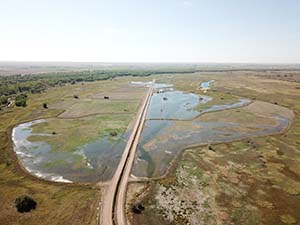
Cross Arrow Ranch Conservation Easement – Completed September 2009
Lying at the confluence of the Rio Grande and Conejos River, the Cross Arrow Ranch conservation easement held by the Rio Grande Headwaters Land Trust (RiGHT) protected 3,238 acres of productive ranchlands along with senior water rights. Over 2,000 acres of this property are wetlands, which provide habitat for a wide variety of migratory birds like waterfowl, sandhill cranes, and the endangered Southwestern Willow Flycatcher.
Conservation easements are important to wetland conservation in the San Luis Valley because over 90% of wetlands regionally are on private lands. Similarly, the most resilient wetlands are on private lands because senior water rights and flood irrigation boost wetland function, especially during drought years. Conservation easements protect these critical habitats from fragmentation, water export, and residential development.
To preserve the wetlands on this spectacular ranch forever, NAWCA funding secured by RiGHT was matched by generous contributions from the landowners, Great Outdoors Colorado, and the Nature Conservancy.
Learn more about the 30th anniversary of the North America Wetlands Conservation Act by visiting nawmp.org/nawca30.